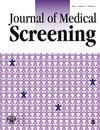2018 年美国预防服务工作组建议声明后前列腺癌筛查中的种族和民族差异
IF 2.3
4区 医学
Q2 PUBLIC, ENVIRONMENTAL & OCCUPATIONAL HEALTH
引用次数: 0
摘要
目标2018年,美国预防服务工作组提倡55岁至69岁男性的医疗服务提供者和患者共同决策。本研究旨在分析遵循这一新建议的不同种族和族裔群体的前列腺特异性抗原(PSA)检测率。方法对 2020-2021 年行为风险因素监测系统数据库进行了二次分析,以评估 55 岁或以上无前列腺癌病史的男性。我们定义了四个种族-族裔群体:非西班牙裔白人(NHWs)、非西班牙裔黑人(NHBs)、西班牙裔和其他。主要结果是最近一次 PSA 检测(MRT),即受访者最近一次 PSA 检测发生在 2018 年之前或 2018 年之后。逻辑回归调整了包括年龄、社会经济地位因素、婚姻状况、吸烟史和医疗服务获取因素在内的协变量。结果在 55 至 69 岁的研究样本中,NHW 男性在 2018 年指南发布后进行 MRT 的比例最高(n = 15,864, 72.5%)。NHB男性在2018年指南发布后进行MRT的比例最低(n = 965,66.6%)。以 NHW 为参照物,NHB 在 2018 年指南发布后进行 MRT 的粗略几率为 0.68(95% 置信区间 (CI) = 0.53-0.90)。最大调整赔率为 0.78 (0.59-1.02)。结论我们发现,与 NHW 相比,55 至 69 岁的 NHB 在 2018 年后报告的 PSA 检测率有所下降。粗略分析显示了这一点,但调整后并未显示。这些发现表明,健康的社会决定因素对高危人群的预防性筛查有影响。本文章由计算机程序翻译,如有差异,请以英文原文为准。
Racial and ethnic disparities in prostate cancer screening following the 2018 US Preventive Services Task Force recommendation statement
ObjectiveIn 2018, the United States Preventive Services Task Force promoted shared decision making between healthcare provider and patient for men aged 55 to 69. This study aimed to analyze rates of prostate-specific antigen (PSA) testing across racial and ethnic groups following this new recommendation.MethodsA secondary analysis was conducted of the 2020–2021 Behavioral Risk Factor Surveillance System database to assess men aged 55 or older without a history of prostate cancer. We defined four race-ethnicity groups: non-Hispanic Whites (NHWs), non-Hispanic Blacks (NHBs), Hispanics, and Other. The primary outcome was the most recent PSA test (MRT), defined as the respondent's most recent PSA test occurring pre-2018 or post-2018 guidelines. Logistic regression adjusted for covariates including age, socioeconomic status factors, marital status, smoking history, and healthcare access factors.ResultsIn the age 55 to 69 study sample, NHW men had the greatest proportion of MRT post-2018 guidelines (n = 15,864, 72.5%). NHB men had the lowest percentage of MRT post-2018 guidelines (n = 965, 66.6%). With NHW as referent, the crude odds of the MRT post-2018 guidelines was 0.68 (95% confidence interval (CI) = 0.53–0.90) for NHB. The maximally adjusted odds ratio was 0.78 (0.59–1.02).ConclusionsWe found that NHB aged 55 to 69 reported decreased rates of PSA testing after 2018 when compared to NHW. This was demonstrated on crude analysis but not after adjustment. Such findings suggest the influence of social determinants of health on preventative screening for at-risk populations.
求助全文
通过发布文献求助,成功后即可免费获取论文全文。
去求助
来源期刊

Journal of Medical Screening
医学-公共卫生、环境卫生与职业卫生
CiteScore
4.90
自引率
3.40%
发文量
40
审稿时长
>12 weeks
期刊介绍:
Journal of Medical Screening, a fully peer reviewed journal, is concerned with all aspects of medical screening, particularly the publication of research that advances screening theory and practice. The journal aims to increase awareness of the principles of screening (quantitative and statistical aspects), screening techniques and procedures and methodologies from all specialties. An essential subscription for physicians, clinicians and academics with an interest in screening, epidemiology and public health.
 求助内容:
求助内容: 应助结果提醒方式:
应助结果提醒方式:


